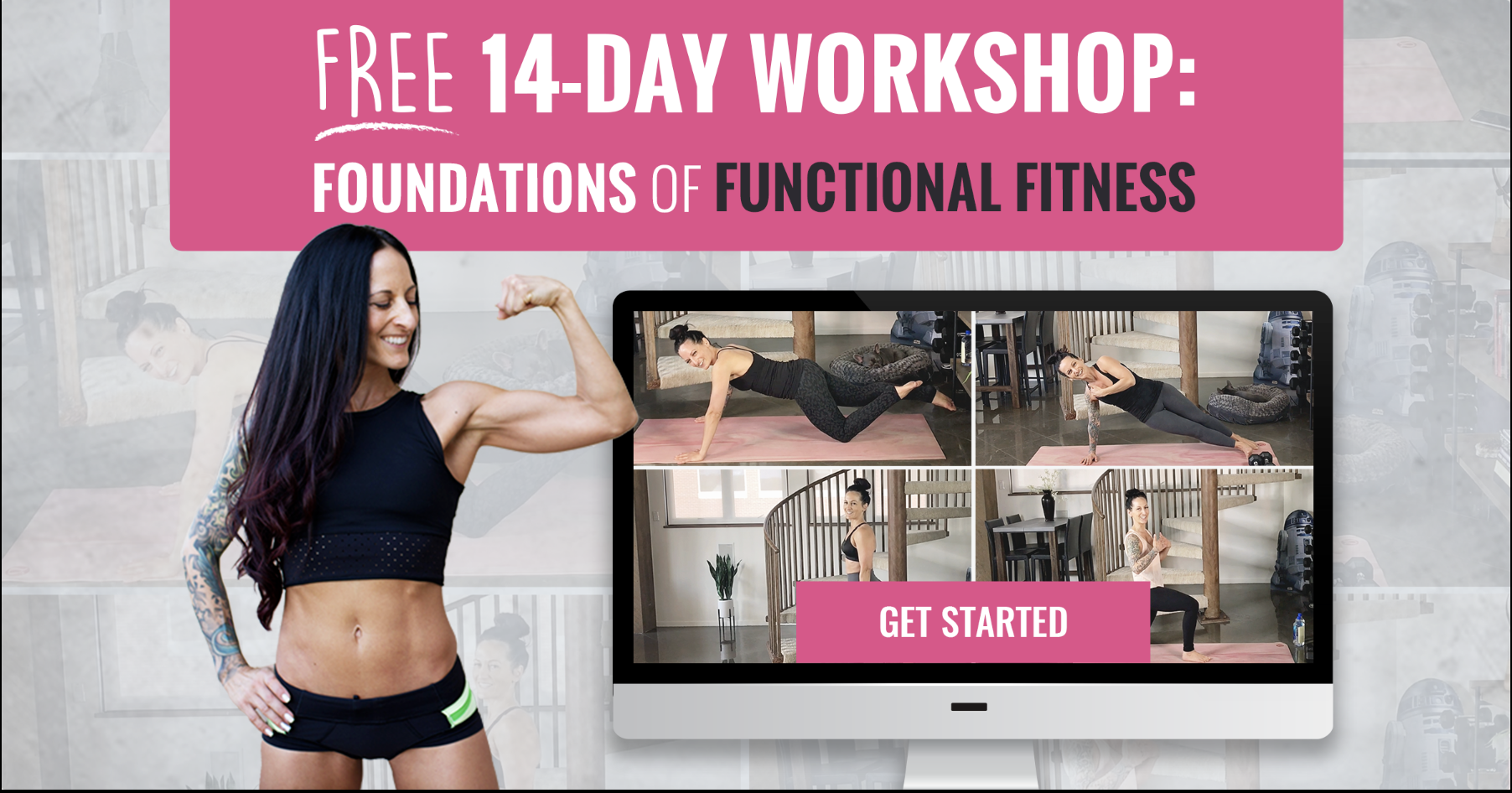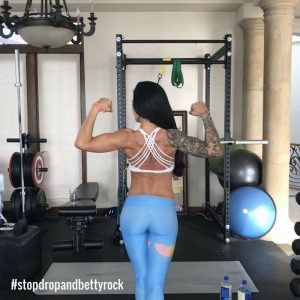
I talk a lot about the importance of balance in my approach to leading a healthy, happy, fit lifestyle.
It’s a cornerstone of the Betty Rocker philosophy!
It’s where my “No Strings Attached” (NSA) philosophy around food comes from…it’s why I believe taking care of your mental and emotional health is just as important as caring for your physical body…it’s why I change up my training styles throughout the year…and it’s why I make it a point to regularly train opposing muscles, including my posterior chain.
What is a “Posterior Chain”?
“Posterior” is an anatomical term that refers to the backside of the body, so your “posterior chain” is simply the chain of muscles along the back of your body.
The phrase primarily refers to the low back, glutes, hamstrings, and calf muscles, but it can also refer to smaller muscles such as the trapezius, latissimus dorsi, posterior deltoids, spinal erector muscles, and/or triceps as well.
What do these muscles do?
Quite a lot!
Virtually every movement your body engages in, including but not limited to sitting, standing, walking and reaching, requires some part of the posterior chain to be successfully executed.
From a purely scientific standpoint, each muscle or muscle group has its own essential function. For example, your glute muscles are designed to stabilize your pelvis and hips, keep your core posture erect, and allow for the proper extension of both your upper and lower body, while your quads and calves are obviously necessary for walking upright, as well as things like running, sprinting, squatting, and rising.
Why are Posterior Chain workouts important?
For SO many reasons, starting with your normal, day-to-day functionality!
Not only will a strong posterior chain allow you to smoothly and painlessly engage in all the everyday movements listed above, but working those back body muscles also improves your core stabilization and overall posture, which of course helps keep our bodies fluid, flexible, and thriving as we get older.
Often times, “out of sight, out of mind” causes us to dial in our attention on the muscles we can look at – like our biceps or our abs. But like I talk about here and here, working all 360 degrees of your body is essential for muscle development and definition, as well as avoiding injury.
Also, since virtually every workout you do calls on your posterior chain to be successful, it makes good sense to focus on training those muscles as much as the ones in the front of your body.
And that, Rockstar, brings us to today’s workout! I recommend that you have some resistance equipment to use for this circuit to help you work on your form, which is the most important part. As always, I’ll talk you through modifications and variations along the way, so get ready, get set, and LET’S GO!
One-off workouts are great, but having a plan to follow is even better! Take a 30-day Challenge in Rock Your Life and have workouts like this formatted into a plan to follow!
Posterior Chain Workout
Click to expand and see all workout move descriptions.Format: Do 3 rounds for the prescribed amount of reps. Rest as needed.
Move 1: Bridge Lift to Hold (10) with a 0:30 hold – progression to Hip Thrusters
- Come down to your mat. Knees are bent, back is flat on your mat.
- Lift your hips up, squeeze your glutes, press through your heels, lower hips back down.
- At the top hold for 30 seconds, keeping your glutes activated.
- Progression Move – Hip Thrusters: Come down, balance your shoulder blades on the side of your chair, couch, or ottoman. Position your weights in your hip creases.
- Lower your booty down, then press through your heels and lift your hips/booty up and back down.
Move 2: Squat to Box (10) – progression to Single Leg Squat to Box (8 each side)
- Stand in front of your box, ottoman, chair, etc. as if you were going t
o sit down. Feet are hip-width distance apart, chest up and open, core engaged.
- Sit your booty back to meet your box, weight in your heels. Engage your core as you come back to standing, and squeeze your booty at the top.
- To add additional resistance, grab weighted objects (such as water bottles or dumbells) and place them on your shoulders.
- Progression Move – Single Leg Squat to Box: Holding your weighted objects, stand in front of your box, feet positioned hip-width distance apart like you were going to do a regular box squat. Lift one leg in front of you and squat down to your box, core engaged. With the weigh in your standing heel, stand back up, and squeeze your booty at the top. Alternate sides. You can also perform this move without any weights.
Move 3: Triceps Extensions (10) – progression to Triceps Dips
- Take a standing or kneeling position holding a water bottle or weight overhead. Lower and lift it, bending at the elbow, toward the back of your neck, keeping your elbow parallel to each other and your chest open. Don’t let your back arch.
- Progression Move – Triceps Dips: Come into reverse tabletop facing away from your box or raised surface, with your hands behind you on the box.
- Keep your chest open and your elbows parallel to one another as you lower yourself down and press back up.
- Keep your knees bent and draw your shoulder blades towards one another to help keep your chest open and pressure off your shoulders.
Move 4: Romanian Deadlift (10) – Option to try Sumo Deadlift
- Place your feet hip-distance apart, keeping a soft bend in the knees and grab your weighted objects in each hand.
- Hinge forward at the hips, pushing your booty back, engaging your core, and keeping your hands/weighted objects close to your shins
- Your back will be flat, with tension in your hamstrings and glutes. Lift the chest and press down through your heels to lift your weighted objects up, squeezing your glutes.
- Be mindful of keeping your back flat and shoulders engaged
- Option: Sumo Deadlifts: Stand with a neutral spine, core engaged, holding your weighted objects with both hands.
- This time, feet are wider than hip-distance apart, toes slightly turned out in a sumo stance.
- Push your booty back as you bend your knees and squat allowing your weighted objects to come between your shins. Keep your core engaged as you do this, with your shoulders back. Don’t allow the weight to pull you forward.
- Keep your weight back on your heels and drive forward with your hips, engaging your glutes as you come back to standing. Repeat.
Move 5: Reverse Flye (12)
- Stand, holding weighted objects. Engage your shoulders back together slightly as you hinge forward at the hips, coming to a standing 45-degree bend. Keep your core engaged.
- Turn your pinkies up toward the ceiling slightly and keep a soft bend in your elbows. Lift your arms up and laterally away from you, focusing on the engagement between your shoulder blades.
- Bring the weights back down, palms facing each other, remaining in a 45-degree bend from the hips. Repeat.
Move 6: Calf Raises (15)
- Stand tall, core engaged, holding optional weighted objects in each hand by your sides.
- With your shoulders actively engaged and your chest lifted, raise yourself up onto your toes and then lower back down.
Move 7: Superwoman Lift with Trap Activator (10)
- Position yourself on your stomach on the mat.
- Extend your arms and legs.
- Lift your arms and legs off of the mat simultaneously.
- Keeping your legs lifted, draw your elbows down towards your ribcage, focusing on the squeeze between your shoulder blades.
- Re-extend your arms, and lower both arms and legs to starting position.
- Pro tip! The wider your legs are, the easier the move will be. As you get stronger, bring your feet in closer together.
If you like learning how your body works and want to keep improving your form for the best results, take my free Foundations of Functional Fitness series!
You can go through these videos in 15 minute daily classes with me, and immediately apply what you learn to your workouts.
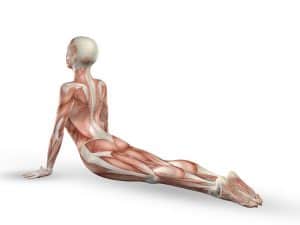
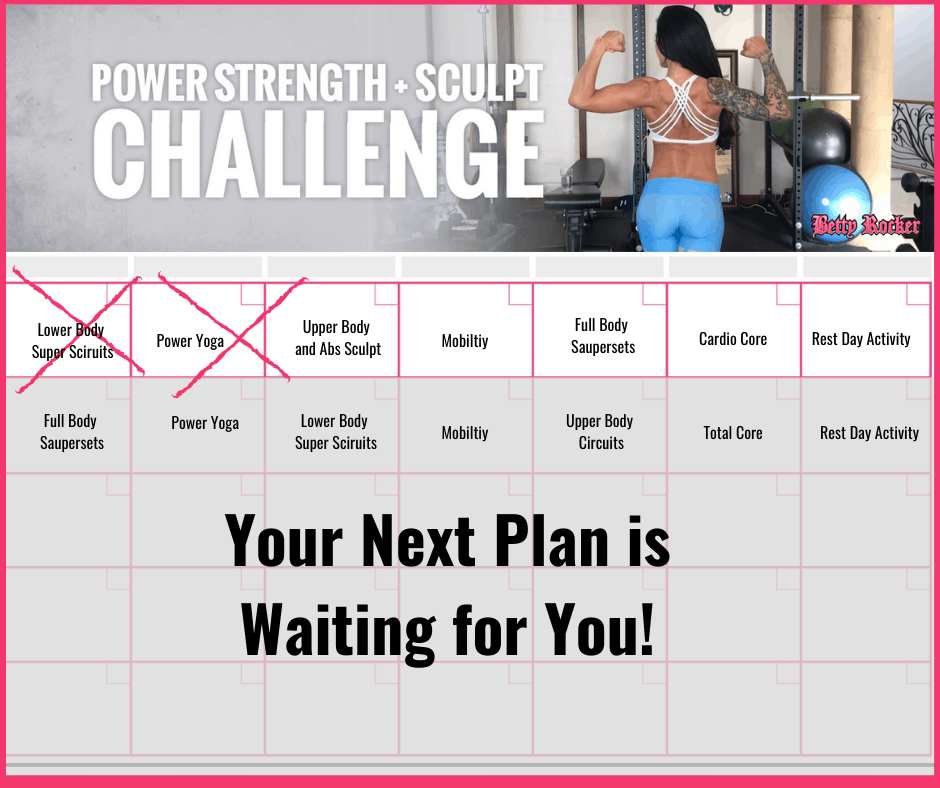
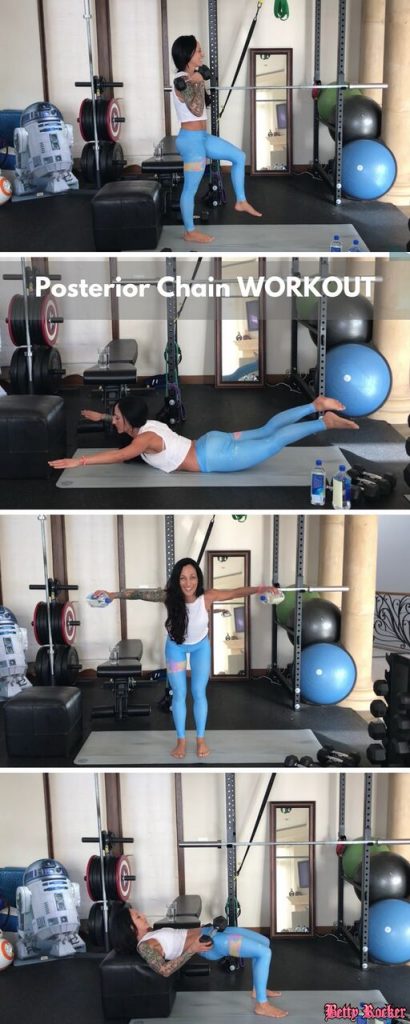 o sit down. Feet are hip-width distance apart, chest up and open, core engaged.
o sit down. Feet are hip-width distance apart, chest up and open, core engaged.